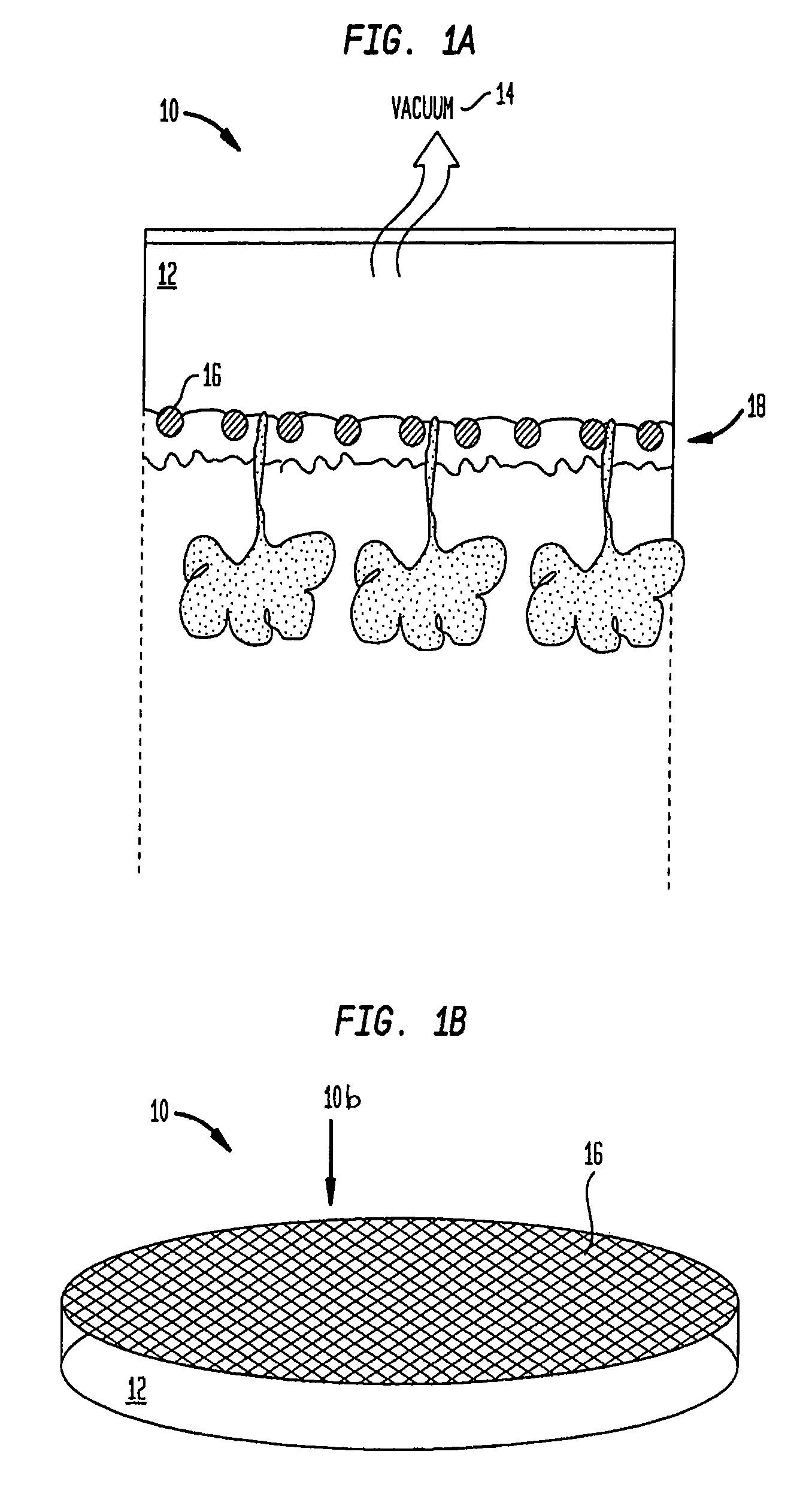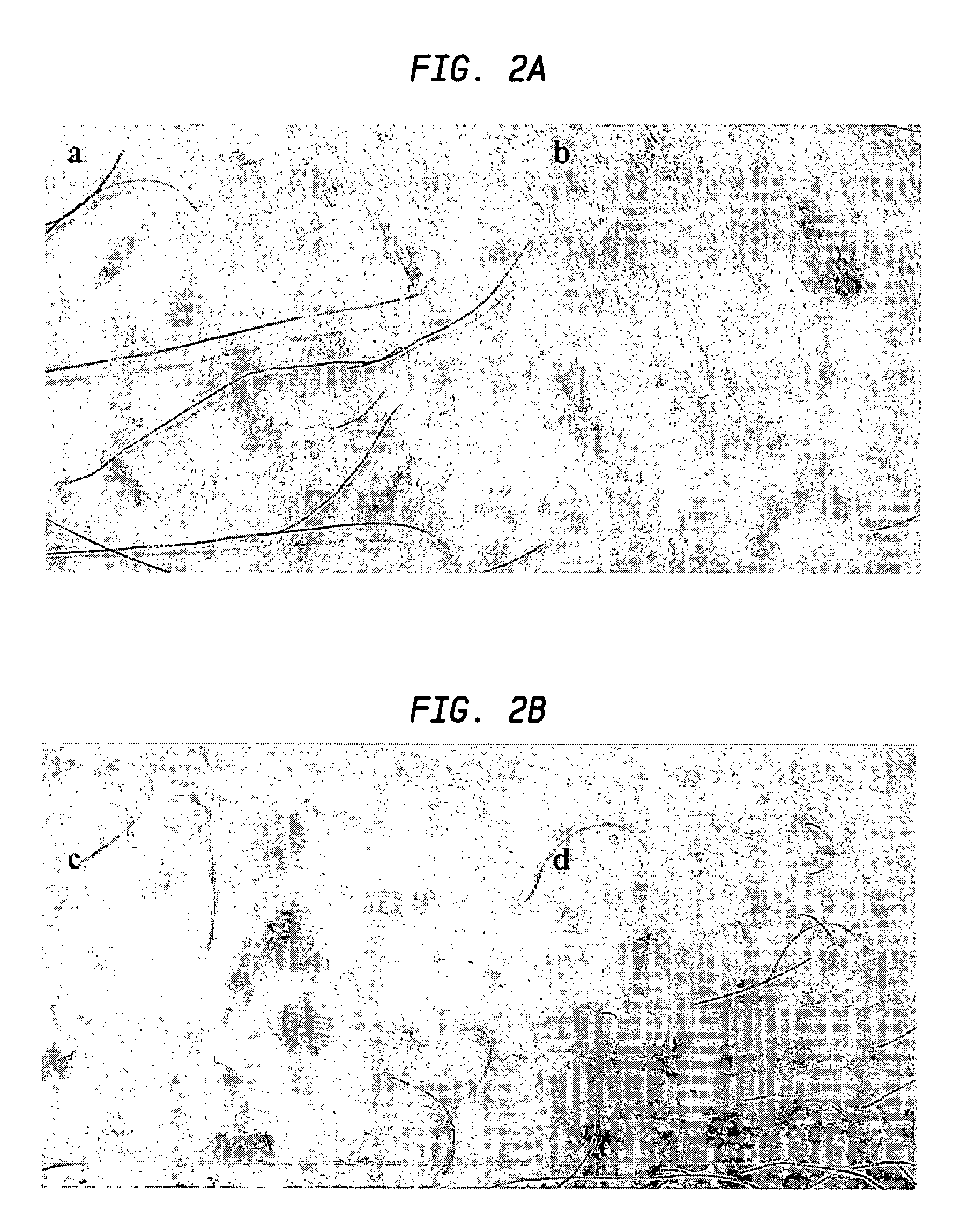Methods and devices for epithelial protection during photodynamic therapy
a photodynamic therapy and epithelial technology, applied in the field of photodynamic therapy, can solve the problems of long-lasting hyperpigmentation or epidermal necrosis, difficult control of treatment area, etc., and achieve the effects of reducing local circulation, preventing damage to superficial tissue layers, and inhibiting the activation of photosensitizing agents
- Summary
- Abstract
- Description
- Claims
- Application Information
AI Technical Summary
Benefits of technology
Problems solved by technology
Method used
Image
Examples
example 1
[0022]ALA was iontophoretically transferred into human skin, followed by incubation for 3 hours. Irradiation was then performed with a 635-nm diode laser on (a) a control, (b) a tourniquet applied to the extremity for 1 minute prior to and during irradiation, (c) a control, and (d) an external vacuum applied to skin. As shown in FIG. 2A, the decreased oxygen in the skin (b) caused by the tourniquet was effective to remove hair, as compared to the control (a), and as shown in FIG. 2B, the decreased oxygen in the skin (d) caused by the external vacuum was effective to remove hair, as compared to the control (c).
PUM
| Property | Measurement | Unit |
|---|---|---|
| Content | aaaaa | aaaaa |
Abstract
Description
Claims
Application Information
 Login to View More
Login to View More - R&D
- Intellectual Property
- Life Sciences
- Materials
- Tech Scout
- Unparalleled Data Quality
- Higher Quality Content
- 60% Fewer Hallucinations
Browse by: Latest US Patents, China's latest patents, Technical Efficacy Thesaurus, Application Domain, Technology Topic, Popular Technical Reports.
© 2025 PatSnap. All rights reserved.Legal|Privacy policy|Modern Slavery Act Transparency Statement|Sitemap|About US| Contact US: help@patsnap.com


